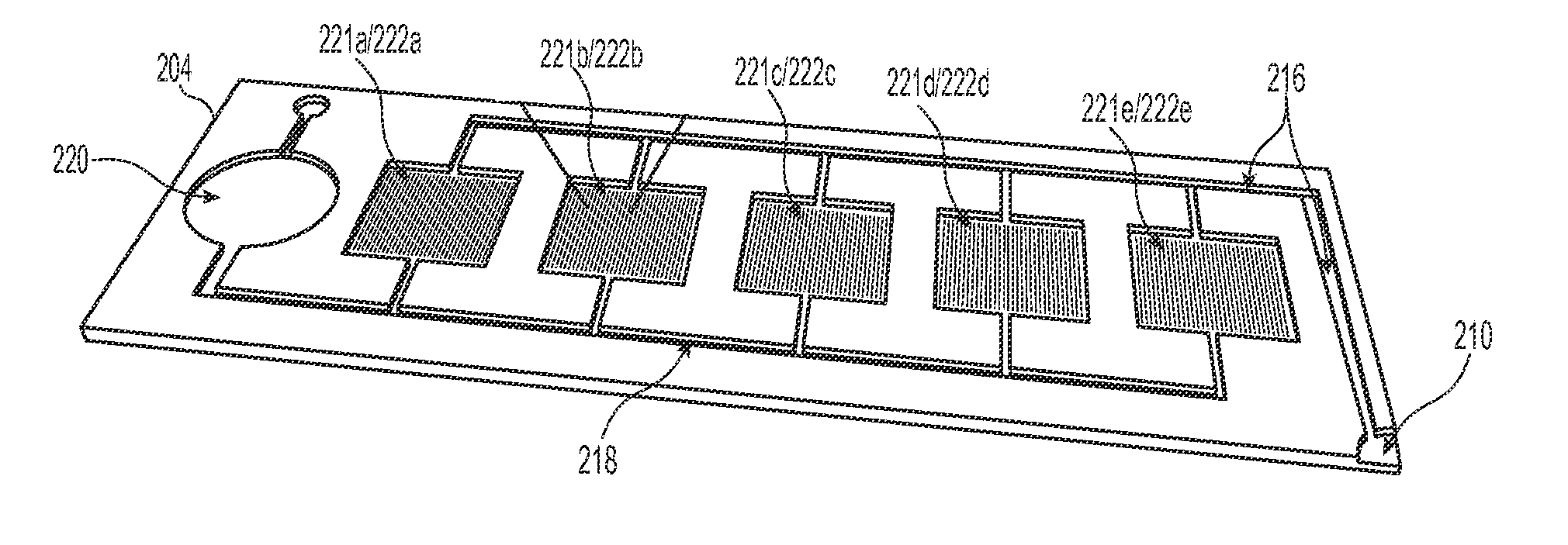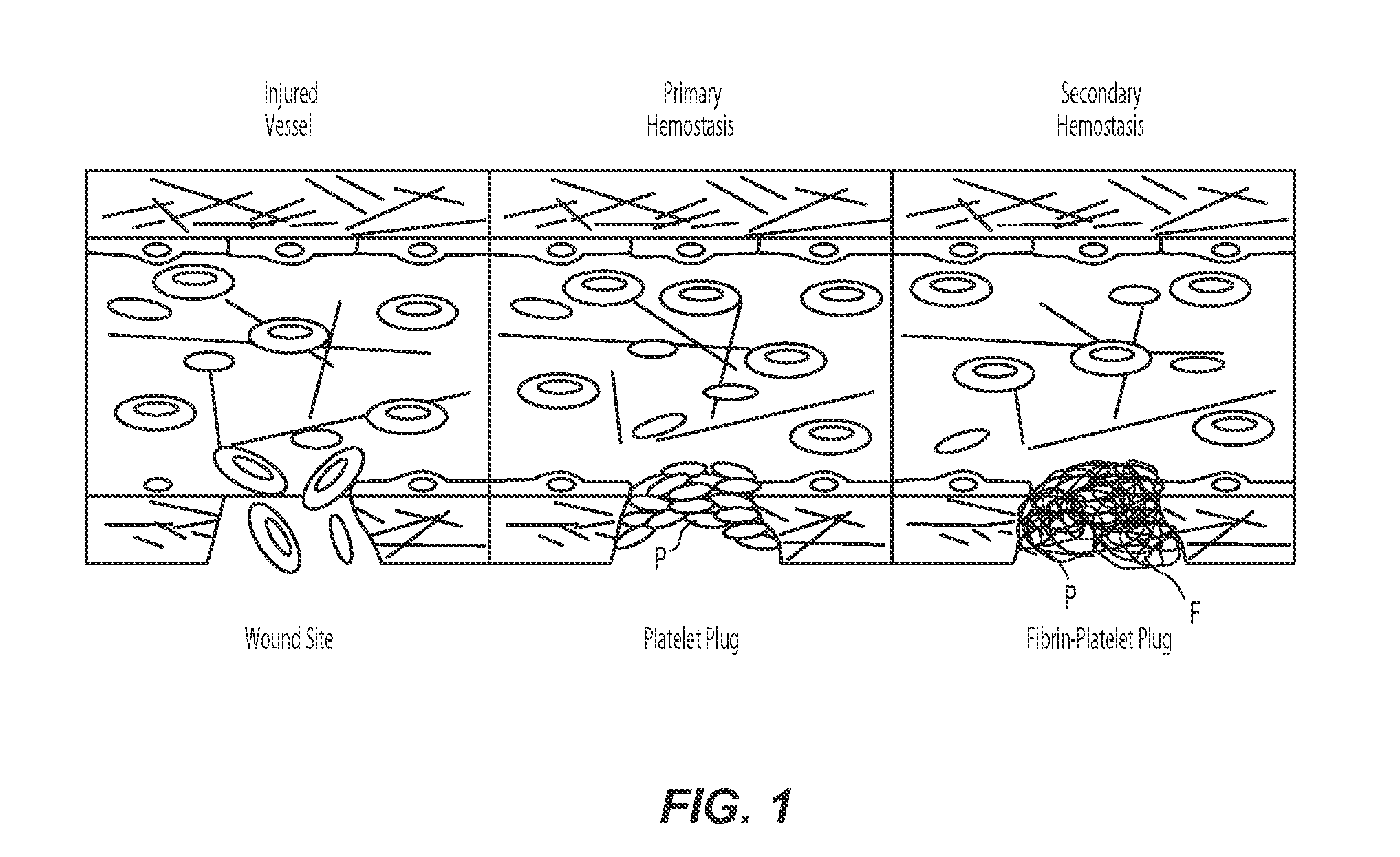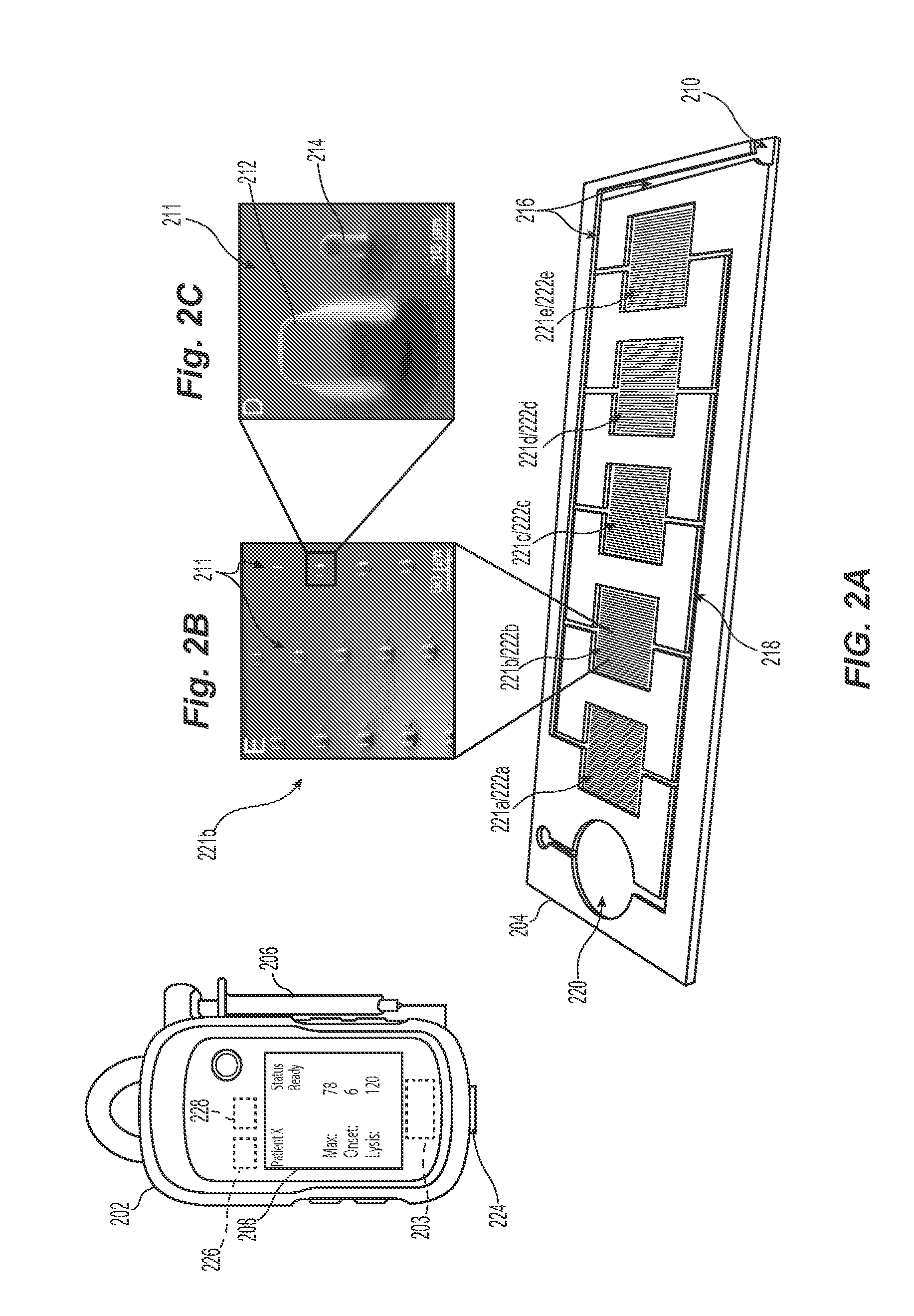Fluidics devices for individualized coagulation measurements and associated systems and methods
a technology of coagulation measurement and fluidics device, which is applied in the direction of fluid controllers, laboratory glassware, instruments, etc., can solve the problems of inability to control the hemorrhaging of the tic, the inability of the response team to quickly detect the uncontrolled hemorrhaging, and the inability to achieve hemostasis, so as to achieve and maintain hemostasis, the effect of reducing the strength of the clot and impairing the stabil
- Summary
- Abstract
- Description
- Claims
- Application Information
AI Technical Summary
Benefits of technology
Problems solved by technology
Method used
Image
Examples
Embodiment Construction
[0023]The present technology describes various embodiments of devices, systems, and methods for measuring one or more clot parameters. In one embodiment, for example, the system includes a plurality of arrays of microstructures, wherein each microstructure includes a generally rigid structure and a generally flexible structure. A first array can be configured to be in fluid connection with a first clotting agent, a second array can be configured to be in fluid connection with a second clotting agent different than the first clotting agent, and a third array is not in fluid connection with the first clotting agent or the second clotting agent. The system can further include a plurality of fluid channels configured to receive a biological sample flowing therethrough. At least a portion of the fluid channels can be individually sized to accept one of the arrays. In some embodiments, the system can include a measuring element that is configured to detect a degree of deflection of one or...
PUM
| Property | Measurement | Unit |
|---|---|---|
| height | aaaaa | aaaaa |
| height | aaaaa | aaaaa |
| height | aaaaa | aaaaa |
Abstract
Description
Claims
Application Information
 Login to View More
Login to View More - R&D
- Intellectual Property
- Life Sciences
- Materials
- Tech Scout
- Unparalleled Data Quality
- Higher Quality Content
- 60% Fewer Hallucinations
Browse by: Latest US Patents, China's latest patents, Technical Efficacy Thesaurus, Application Domain, Technology Topic, Popular Technical Reports.
© 2025 PatSnap. All rights reserved.Legal|Privacy policy|Modern Slavery Act Transparency Statement|Sitemap|About US| Contact US: help@patsnap.com



